School of Electrical Engineering
The EE Major provides a well-organized education program to foster creative and trained electrical, electronic, and computer engineers
who can solve high-tech
engineering problems
as well as practical ones.
The school of Electrical Engineering deals with the state-of-the-art electronics and telecommunications which are the driving forces of Korea IT industry. The school consists of 27 full-time faculties, 80 graduate student and 700 undergraduate students. The school provides curricular that satisfies the requirements of the ABEEK (Accreditation Board for Engineering Education of Korea). The research area of the school covers all major electrical engineering fields including IC design, RFID, ubiquitous sensor network, telematics, embedded system, power system of LCD and PDP, multimedia communication, 5G wireless network, and others.
School of Electrical Engineering has the educational objectives to nurture the students with capabilities of problem solving based on engineering understanding, analysis, and application, with system design based on fundamental electrical engineering knowledge, with global competence, and with engineering leadership in specified industrial fields.
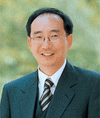
- Seoul National Univ., B.S
- KAIST, M.S
- KAIST, Ph.D
Computer Engineering
hroh@kookmin.ac.kr
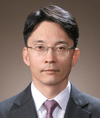
- Seoul National Univ., B.S.
- Seoul National Univ., M.S.
- Seoul National Univ., Ph.D.
Control Engineering
ahs@kookmin.ac.kr
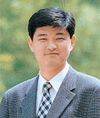
- Hanyang Univ., B.S.
- KAIST, M.S.
- KAIST, Ph.D.
Computer Engineering
yeong@kookmin.ac.kr
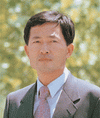
- Sogang Univ., B.S.
- Pennsylvania State Univ., M.S.
- Pennsylvania State Univ., Ph.D.
Signal Processing
kdk@kookmin.ac.kr
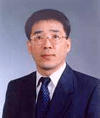
- Seoul National Univ., B.S.
- Seoul National Univ., M.S.
- Univ. of Minnesota, Ph.D.
Semiconductor Devices and Integrated Circuits
dmkim@kookmin.ac.kr
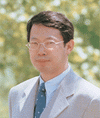
- Seoul National Univ., B.S.
- Seoul National Univ., M.S.
- Seoul National Univ., Ph.D.
Visual Communication
dwkang@kookmin.ac.kr
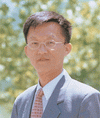
- Seoul National Univ., B.S.
- KAIST, M.S.
- KAIST, Ph.D.
Power Electronics
hongss@kookmin.ac.kr
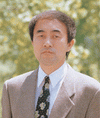
- Seoul National Univ., B.S.
- Seoul National Univ., M.S.
- Seoul National Univ., Ph.D.
Integrated Circuit Design
kimdj@kookmin.ac.kr
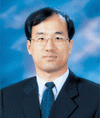
- Kyungpook National Univ., B.S.
- Kyungpook National Univ., M.S.
- Univ. of Massachusetts, Ph.D.
Wireless Networks and Communications
yjang@kookmin.ac.kr
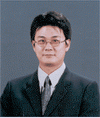
- Kookmin Univ., B.S.
- Kookmin Univ., M.S.
- Kookmin Univ., Ph.D.
RF/Microwave Circuit Design
jspark@kookmin.ac.kr
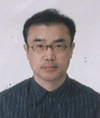
- Seoul National Univ., B.S.
- Seoul National Univ., M.S.
- Seoul National Univ., Ph.D.
Image Signal Processing
khjung@kookmin.ac.kr
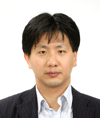
- Seoul National Univ., B.S.
- Seoul National Univ., M.S.
- Seoul National Univ., Ph.D.
Semiconductor Devices and Integrated Circuits
drlife@kookmin.ac.kr
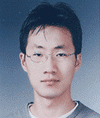
- Pusan National Univ., B.S.
- KAIST, M.S.
- KAIST, Ph.D.
Power Electronics
djhan@kookmin.ac.kr
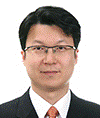
- Seoul National Univ., B.S.
- Seoul National Univ., M.S.
- Seoul National Univ., Ph.D.
Computer Network
schoi@kookmin.ac.kr
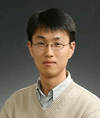
- POSTECH, B.S.
- POSTECH, B.S.
- Queen’s Univ., Ph.D.
Digital Communications
mcju@kookmin.ac.kr
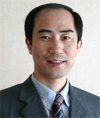
- Seoul National Univ., B.S.
- Seoul National Univ., M.S.
- Texas A&M Univ., Ph.D.
Optical Communication System
ypark@kookmin.ac.kr
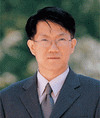
- Min, Kyeong Sik
- KAIST, M.S.
- KAIST, Ph.D.
Semiconductor and Integrated Circuits
mks@kookmin.ac.kr
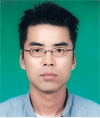
- KAIST, B.S.
- KAIST, M.S.
- KAIST, Ph.D.
Power Electronics
drno@kookmin.ac.kr
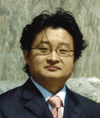
- Seoul National Univ., B.S.
- Seoul National Univ., M.S.
- Seoul National Univ., Ph.D.
Embedded System
gm1004@kookmin.ac.kr
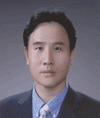
- Yonsei Univ., B.S.
- Yonsei Univ., D.S.
- Yonsei Univ., Ph.D.
RF Engineering
bjjang@kookmin.ac.kr
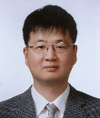
- Seoul National Univ., B.S.
- Seoul National Univ., M.S.
- Seoul National Univ., Ph.D.
Control Engineering
mcwnt@kookmin.ac.kr
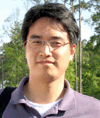
- Seoul National Univ., B.S.
- Seoul National Univ., M.S.
- Seoul National Univ., Ph.D.
Power System
Power System
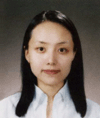
- Seoul National Univ., B.S.
- Seoul National Univ., M.S.
- Univ. of California Irvine, Ph.D.
Security and Privacy, Applied Cryptography
jihyek@kookmin.ac.kr

- Seoul National Univ., B.S.
- Seoul National Univ., M.S.
- Imperial College London, Ph.D.
Control Engineering
hchang@kookmin.ac.kr
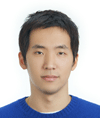
- Chung-Ang Univ. B.S.
- KAIST, M.S.
- KAIST, Ph.D.
Semiconductor Devices and Integrated Circuits
sjchoiee@kookmin.ac.kr
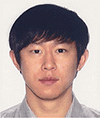
- Seoul National Univ., B.S.
- Seoul National Univ., B.S.
- University of Michigan., Ph.D.
RF/Analog Integrated Circuit Design
hichae@kookmin.ac.kr
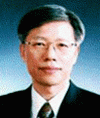
- Sogang Univ., B.S.
- KAIST, M.S.
Signal Processing
hskim56@kookmin.ac.kr
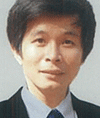
- Hanoi Univ of Technology., B.S.
- Kookmin Univ., M.S.
- Kookmin Univ., Ph D.
Wireless Networks and Communications
namtuanlnt@kookmin.ac.kr
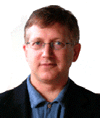
- Ecole Polytechnique de Montreal, B.S. Physics Engineering
- Ecole Polytechnique de Montreal, M.S. Chemical Engineering
lmcaron@kookmin.ac.kr
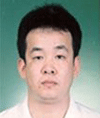
- Kookmin Univ., B.S.
- Kookmin Univ., M.S.
- Kookmin Univ., Ph.D.
Signal Processing
omnistar@kookmin.ac.kr
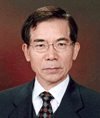
- Seoul National Univ., B.S.
- Seoul National Univ., M.S.
- Seoul National Univ., Ph.D.
Microwave Engineering
hgcho@kookmin.ac.kr
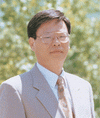
- Korea Univ., B.S.
- Korea Univ., M.S.
- Korea Univ., Ph.D.
Power Electronics
scsk@kookmin.ac.kr
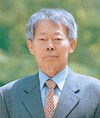
- Kyungpook National Univ., B.S.
- Seoul National Univ., M.S.
- Seoul National Univ., Ph.D.
Control Engineering
dhkim@kookmin.ac.kr
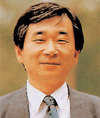
- Seoul National Univ., B.S.
- Seoul National Univ., M.S.
- Seoul National Univ., Ph.D.
RF Engineering
ljb@kookmin.ac.kr
Basic Courses
Logic Circuit (3)This course covers the theory and techniques for digital system design and analysis. The topics of this course include the binary number system, Boolean algebra, combinational circuit design and analysis. This course also introduces the fundamentals of sequential circuits design and analysis.
Electromagnetics I (3)Electromagnetics is necessary to have a deep understanding of various electronic systems including microwave circuits, antenna, optics, semiconductors, and so forth. Principles of waves and propagation are the background topics. Lectures on the transmission line theory and electrostatic theory that include E-field, capacitance, and inductance are delivered.
Electronic Mathematics (3)This course covers the fundamentals of mathematics for electrical engineering such as Taylor polynomial and differential equation. In addition, both Laplace transform and Fourier transform are covered as the tools of a frequency domain analysis, and the z-transform is dealt in terms of a digital signal processing.
Programming Language (3)This course introduces the more complex elements of the C programming language including: functions, arrays, pointers, structures, and files. Examples, homework and applications of programming concepts make extensive use of the C programming language.
Fundamental Electronics Engineering Laboratory I (1)Resistance circuits, R-C circuits, R-L circuits, oscilloscope manipulation, resonance circuits, AC bridge networks, and fundamentals of networks.
Digital Circuits Laboratory (1)Component-level issues related to the testing and fault tolerance of digital systems. Topics include the test generation for combinational and sequential circuits, error detecting/correcting codes, self-checking and fail-safe logic circuits, the design for testability, built-in self-test circuits, and the testing of programmable logic arrays.
Digital Electronics (3)This course deals with sequential circuit design and analysis, flip-flops, registers and counters, and various memory and programmable logic devices. Asynchronous circuits and fundamental interfaces are also covered.
Circuit Theory I (3)In this course, some of basic quantities of current, voltage, power, and so on and their engineering expressions are introduced. And, components of linear circuits such as resistor, current source, voltage source, inductor, and capacitor are characterized electrically and their mathematical models are studied. Simple electric circuits with resistors are thoroughly analyzed by using voltage division, current division, the superposition principle, nodal analysis, mesh analysis, and Thevenin and Norton equivalence theorems. Energy-storage elements are introduced and techniques are given to analyze the circuits containing these elements. Circuit analysis technique using phasor are introduced in solving sinusoidal steady-state responses.
Applied Mathematics (3)This course mainly deals with the areas of numerical analysis and probability theory which are needed for various applied engineering courses. The topics of numerical analysis are Taylor polynomial, the error bond, Euler’s method, and several iterative methods. Also, the topics of probability theory are the probability, random variable, expectations, probability distribution function, and so on.
Fundamental Electronics Engineering Laboratory Ⅱ (1)Ohms law, Kirchhoff’s laws, and circuit analysis techniques such as node voltage, the mesh current method, and circuit theorems, Independent and dependent sources, R, C, L and operational amplifiers. First and second order circuits. Steady state analysis and phasors.
Creative Engineering Design (3)This course is to develop the ability of the unified thinking on the knowledge of electronics and other fields, the motivation on electronics through a team project experience, and to cultivate the basic communication skills and creativeness as an engineer. The overall electrical techniques and its implications of the theories are to be understood in the lecture, from which the team design projects are carried out in the design practice. The design-project portfolio should be maintained under the supervisor’s instruction, and the final report of the creative design project should be submitted.
Microprocessor Application Experiments (2)This course provides students with practical hands-on experiences with microprocessor software application and interfacing techniques. Topics include the configuration of microprocessor and peripheral components, I/O port control, interrupt handling, and the C programming techniques for embedded systems.
Circuit Theory Ⅱ (3)In this course, AC analysis techniques of linear circuits by using the transform domain are introduced. The course focuses on the theories of phasor and Fourier and Laplace transformations, and their applications to basic electric circuits are deeply studied. And, the concepts of frequency domain, complex frequency, frequency responses, transfer functions, impedance, admittance, maximum power transfer, analog filters, and two-port networks in linear circuits are discussed.
Microprocessor Application Engineering (2)This course introduces basic computer organizations, microprocessor instruction sets, the design of various types of digital interfaces, and microprocessor system design considerations. Topics include detailed study of particular microprocessor architecture and instruction sets (Intel 8051), I/O port programming, basic theory of interrupt handling, timer/counter, and serial interface.
Electromagnetics Ⅱ (3)Electronics and Communication technology is rooted in electricity and magnetisms that are integrated in the Electromagnetics theory. In this class, lectures on magnetostatics and Faraday’s law are delivered. Propagation of EM waves are also dealt. Further, numerous applications including optical fiber, as well as antenna and satellite communications are included in the topics.
Electronic Circuits Laboratory I (1)Power suppliers, diode characteristics, applications of various electronic circuits, transistor characteristics, basic amplifiers, fundamentals of two-port networks, and basic digital electronic circuits.
Electronic Circuits I (3)Active circuit elements, diode, transistor, FET Amplifier circuit, biasing in the amplifier, fundamental circuits of the amplifier, and feed-back amplifier fundamentals.
Computer Organization and Architecture (3)An introduction to the organization and operation mechanism of a digital computer system with a central processing unit(CPU), memory, and input/output(I/O). Hardware structures such as register transfer and ALU design, arithmetic algorithms, control unit design by hardwired or microprogramming are taught. For the software structure, instruction set architecture, addressing modes, and programming flow are covered. Also included are memory system design based on memory hierarchy, cache, and virtual memory systems; I/O system with transmission modes, bus control, and DMA. As prerequisites, Digital Logic Design and Microprocessors are recommended.
Circuit and Systems (3)This course briefly reviews the basic circuit theories, focuses on the analysis and design of circuit and system used in the display driver, switched mode power supply, and motor driver system. The main part of the course is the theory and engineering of the analog circuit and system both in the time-domain and in the frequency domain.
Signal and System (3)The purpose of this course is to express continuous-time signals and systems in the time and frequency domain, and to teach students to analyze the expressed equations utilizing the Fourier transform and Laplace transform. The contents of this course include the definition of convolutions, Fourier transformation, and Laplace transformation so that students can analyze continuous time signals and systems both in the time and frequency domain. System design is also included in this course to provide the general concepts on causality and stability in designing linear time-invariant systems.
Semiconductor Engineering I (3)Basic properties of semiconductors, the conduction process, carrier transport phenomena, the PN junction, and processing theory.
Communication Engineering Ⅰ(3)This course briefly reviews the mathematical analysis of signals and systems, focuses on the transform domain and manipulation of the signals and systems. The main part of the course is the theory and engineering of the analog communication system which includes amplitude modulation and coherent/non-coherent detection, angle modulation, the characteristics of noises in communication systems, and the signal-to-noise ratios.
Probabilities and Statistics (3)The objectives of this course are to introduce the principles of random signals and to provide tools whereby one can deal with systems involving such signals. Probability, random variables, and random process will be covered in this course.
Electronic Circuits Laboratory Ⅱ (1)Transformers, power calculations, and filters. Microelectronics circuits with diodes, the bipolar junction transistor, and field-effect transistors. One stage amplifiers: DC and small signal analysis.
Electronic Circuits Ⅱ (3)Amplifier circuits, tuned amplifier, frequency response, rectifier circuits and oscillator circuits. Basic communication circuits, the power amplifier, feedback amplifier, and modulation circuits.
Microprocessor Design (3)This course investigates the architecture of various microprocessors. The topics include the concepts of ALU; data and address buses; basic instructions and their operational procedure based on basic instruction cycles; logic, arithmetic, conditional branches, input and output instructions; concepts of DMA interrupt; interfacing techniques with TTL electronics components; and application program development by use of a MDS system.
Control Engineering (3)An introduction to the analysis and synthesis of continuous-time control systems. The principles of feedback control, the root locus method, frequency responses, and state equations are treated. Concepts of controllability and observability will be covered.
Semiconductor Engineering Ⅱ (3)Physics and the characteristics of semiconductor devices, device applications, impurity properties in semiconductors, and processing technology.
Digital Signal Processing (3)This course provides an overview of the design techniques of FIR and IIR digital filters by analyzing the basic concepts of digital signal processing. To execute the computations required for the design and implementation of the digital filters, an experimental procedure is included during the course in such a way that a DSP of TMS series, provided by TI Co., is introduced. The architecture, characteristics and handling techniques of the TMS series DSP is explained. FFT and its application is also included.
Communication Engineering Ⅱ (3)The first half of the course is devoted to the theory and practices of the pulse modulation and analog-to-digital conversion, which consists of sampling, quantization, and pulse coded modulation. The other half covers the conceptual description and analysis of digital data transmission systems including data compression, bit error probability in AWGN channels, mutual information, and channel capacity.
Microwave Engineering Ⅰ(3)An introduction to microwave engineering. Transmission line theory, planar transmission lines, and waveguides, microwave network analysis, impedance matching and tuning, as well as microwave resonators.
Teaching Theory of Electronics Engineering (2)This course is offered for students intending to be teachers in secondary school. Laboratory technique principles and curriculum planning will be studied.
Textbook Research and Teaching Methodology of Electronics Engineering (2)Textbook research of technical high school, teaching methodology to teach students of a technical high school.
Design Practice for Electronics Engineering (3)This is the design project course for senior level student. The main purpose of this course is to build the capability of defining and solving an engineering problem by providing the experience of integrating various kinds of previous knowledge. Also, the technical reporting and oral presentation skill are dealt with. The topics of project are determined by the students’ interest and the specialty of professors.
Control Engineering Lab (1)Fundamental experiments of controller design using microprocessors. Basic concepts of 16 bit/32 bit microprocessors are introduced with SW/HW development tool kits. Various applications are implemented for dc/ac motor control and autonomous vehicle control.
Embedded System (3)This course introduces basic concepts for embedded systems. Topics include design technologies for microprocessor system design, controlling peripherals, multi-tasking, task synchronization and real time operating system. As case studies, some programming applications on ARM-based Linux platforms and 188-based uC/OS-II platforms are examined.
Digital Control (3)An introduction to the analysis and synthesis of discrete-time control systems. State feedback control will be designed and computer simulation techniques of the control system will be covered with implementation issues.
Electronic Circuit Design (3)A study of advanced electronics circuits and their applications with attention to parameters and characteristics which limit performance. Typical topics would be operational and instrumentation amplifiers, filter circuit, oscillator circuit, and timer and analog signal waveform generator
Optical Electronics (3)Topics on various optical communication systems to increase the communication capacity are covered. Optical fiber, laser diode, photo diode, LED, optical amplifier, and other passive optical components are analyzed and their applications are explained. Lectures on communication systems using optics such as SONET, ATM, WDM, Optical SCM, and Access PON are provided.
Integrated Circuits I (3)Basic properties of semiconductors, the conduction process, carrier transport phenomena, PN junction, and processing theory.
PCB & CAD (3)Design methodologies for schematic design, PCB design, PCB and IC layout, circuit simulation, and VHDL simulation for digital and analog circuits are studied in this course. And, laboratories for studying design methodologies are performed in this course and all students are required to perform their design projects during the course.
Communication Engineering Laboratory (1)We perform the experiments about digital modulation/demodulation methods for both binary (ASK, FSK, PSK) and multi-level (M-ary ASK, M-ary FSK, M-ary PSK, QAM/APK). Also, we foster the application capability for wireless resource structure and management of mobile communication systems by implementing the experiments of multiple access methods (TDMA, CDMA).
Microwave Engineering Ⅱ (3)An introduction to microwave systems. Circuits and devices incorporated in the apparatus and systems at microwave frequencies. Power dividers and directional couplers, microwave filters, isolators, phase shifters, converters, detectors, amplifiers, oscillators, and antennas.
Digital Communication (3)This course introduces the fundamentals of digital communication system analysis and design techniques. The contents covered are the design of coherent and non-coherent receivers under white Gaussian noise. In addition, covered are MPSK, MFSK, QPSK, MSK, DPSK, and other digital modulation methods. Error control coding is also introduced.
Data Communication (3)This course provides introduction to the theory and practice of the design of computer and communications networks, including the ISO seven-layer model. Current network types and evolving network technologies are introduced, including personal, local, metropolitan, and wide area networks. The topics for this course include the QoS(Quality of Service) requirement of multimedia wireless networks, current standardization trends, signaling, encoding, modulation, transmission media, multiplexing, switching, error correction, MAC(Medium Access Control), LLC(Logical Link Control), ATM, traffic management, Internet Protocol(IP), routing, TCP/IP, and application protocols.
Data Structures and Algorithms (3)This course provides a comprehensive introduction of computer algorithms and data structures. The course introduces the time and space complexities of algorithms, fundamental algorithms, and basic ADTs(abstract data type) including arrays, lists, trees, and graphs.
Power Electronics Engineering (3)Introduction to the principles and applications of switched mode power supply. Typical topics are linear power supplies, and basic switching circuit such as buck, buck-boost, and boost converter.
Digital System Design Project (3)This course deals with the entire project in the area of electronic engineering. Project topics are included as : microprocessor design, analog circuit design, VHDL programming, DSP programming, communication system, and control system etc. The design concept, design procedure, simulation, experiments, and documentation on the selected project is covered. The presentation of the selected project is required.
Power Electronics Laboratory (1)Power supply circuit implementation with particular attention on parasitic elements such as the stray inductance and capacitance will be performed. Typical topics are buck, buck-boost, and boost converter.
Sensor Engineering and Applications (3)This course introduces various sensing technologies. Physical principles of sensing devices including optical, magnetic, ultrasonic, semiconductor sensors are reviewed. Application areas such as temperature, pressure, location, humidity, etc. are studied in this course. Students are required to design measurement circuits and computer interfacing hardware and software.
Integrated Circuits Ⅱ (3)Transistor-level design theory of combinational and sequential logics with both static and dynamic circuit concepts. Design of digital subsystems including adder and multiplier.
Integrated Circuits and Fabrication Technology (3)A study of nonlinear electronic circuits and IC circuit design including nonlinear waveshaping, the nonlinear bipolar transistor FET model, and circuits.
Microwave Engineering Lab (1)This course introduces basic concepts for Radio Frequency Communication and Microwave Engineering through hands-on investigation of technologies like RFID (Radio Frequency IDentification) and USN (Ubiquitous Sensor Network). Students will be exposed to practical design issues, such as International Standardization, Air-Interface Technologies, Protocols, Antennas, Wireless systems, etc. As case studies, some system design and firmware applications for UHF RFID systems are examined.
Radio Frequency Circuits (3)This course introduces basic concepts for CMOS Radio Frequency integrated circuits using wireless circuit and system analysis techniques derived from Microwave Engineering theories. Topics include design technologies for wireless transceiver systems such as CDMA, wireless LAN, Zigbee, etc. As case studies, various wireless transceiver system components, including LNA, Mixers, VCOs, PLL, PA, etc., are designed, and their linearity and performance characteristics are examined.
Mobile Communication (3)This course covers the concepts of cellular systems, interference, path loss models, fading effect and distribution, link budget, digital modulation, diversity, FDMA, TDMA, CDMA, MIMO, OFDM, multicarrier CDMA, frequency reuse and channel assignment, adaptive modulation, packet radio and capacity, power control, handover control, call processing and control, CDMA performance engineering, radio access networks, radio network planning, radio resource management, and CDMA traffic engineering.
Modern Control (3)Analysis and design of feedback system for digital system is studied. The basic structure and principles of control hardware and program is covered. And embedded control system based on real time operating system will be covered. An electronic control system for vehicle and car network system will be given as application targets.
Field Practice (1)This course provides field experience for students in research institutions and industries.
Seminar in Special Topics (1)Through communication between instructors and students, motivation and curiosity for science will be elevated. In addition, relationships among junior and senior students will be activated. This course will be an opportunity for students to prepare their professional goals. Depending on the instructor in charge, the title of this class can be classified into following three areas.
























